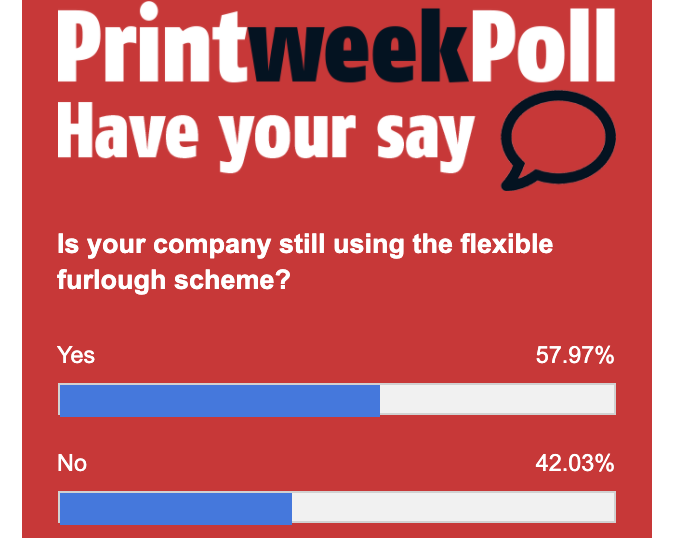The furlough scheme began to taper off in July and will cease at the end of September, with many businesses re-shaping their operations accordingly
The latest provisional government statistics, for June, show that there are still more than 4,000 printing industry employers using the scheme, with 20,400 employments on furlough, down 7.27% on the May figure of 22,000, which was revised upwards slightly from the provisional data.
| Sector | Employers with PAYE staff eligible for furlough | Employments eligible for furlough | Number of employers furloughing at 30 June* |
Take-up rate at 30 June* |
Employments on furlough at 30 June* |
Take-up rate at 30 June* |
|
| Printing and service activities related to printing | 7,000 | 75,000 | 4,200 | 60% | 20,400 | 27% | |
| Manufacture of articles of paper and paperboard | 900 | 47,700 | 300 | 34% | 1,600 | 3% | |
| Manufacture of pulp; paper and paperboard | 200 | 7,100 | 100 | 34% | 500 | 8% |
Source: HMRC *provisional
A broad range of companies from micro businesses to large, multi-site groups and industry suppliers are still using the scheme, with some claims running into hundreds of thousands of pounds per month.
A recent Printweek poll found that almost 58% of respondents said their business was still using furlough.

There have been concerns that the end of the scheme could result in widespread redundancies across the economy – particularly among sectors that remain badly impacted by the pandemic such as aviation – with the TUC calling on the government to create a permanent short-time working scheme, such as those in place in some other countries including Germany and Japan.
However, the latest BPIF Printing Outlook report does not indicate that widespread redundancies in print are on the cards – not least because many firms have already restructured.
“Extensions and flexibility in the Government’s furlough scheme has had the effect of filtering redundancy decisions by companies over time. Whilst many redundancy decisions have already been made (and actioned), some have been delayed, and potentially avoided, as companies kept one eye on the job retention scheme and the other on the pace of economic recovery,” the report stated.
The Printing Outlook survey for Q3 found that 88% of companies did not expect to make any redundancies before the end of September.
“The remaining 12% anticipate some redundancies but they are mostly only very small proportions of their workforce,” the BPIF reported.
Just 1% of companies expected to make between 11%-15% of their workforce redundant before the end of September.
One industry boss told Printweek: “We’ve gone through two rounds of redundancies to be in the right place for when things recovered. After a bad start in January, each month has been better than the last.
“We’d been gradually bringing people back, but still have some people on four day working. August has been decent, hopefully we will have the usual seasonal boost. But then that’s going to depend on what happens to the economy and whether there are any new lockdowns.”
Another CEO said he thought the scheme had been “absolutely fantastic but had dragged on too long”.
“We are ready, and have been for a while, for it to be wound up,” he said.
The latest HMRC figures for the total use of the furlough scheme show that there were 540,000 employers with 1.9m staff on furlough at 30 June, down 590,000 from the end of May. Since the start of the scheme in March 2020 a total of 11.6m jobs have been put on furlough at some point during its operation, with the cumulative amount claimed reaching £67.4bn by 14 July.
One industry boss also noted that the end of the scheme was likely to bring people back into the labour market.
“There are labour shortages in many industries from HGV drivers to hospitality. How many people will come onto the labour market and ease some of those pressures? It could change things and that needs to play out over the coming months.”










